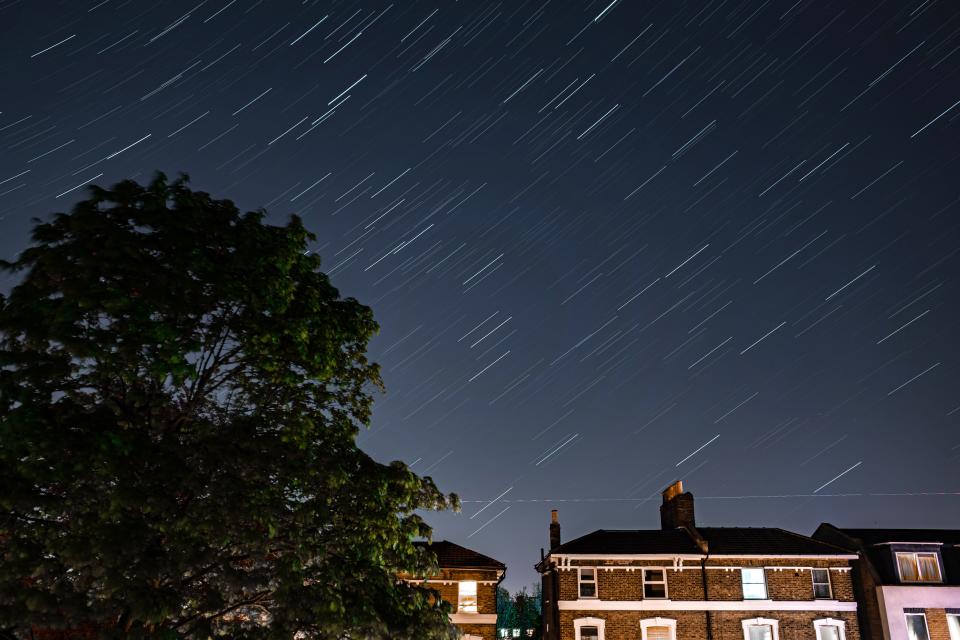Ready to wish on a shooting star? Here's how to see the Lyrid meteor shower in Oklahoma
Oklahomans and other Northern Hemisphere residents have an opportunity to wish on a shooting star this April.
The Lyrids meteor shower is here, and the peak of the shower is coming up in just a few days.
Here's everything we know about the Lyrid meteor shower, including the best time to view it and how the meteors originated.
When is the Lyrid meteor shower?

While the Lyrids can be seen from April 15 to April 29, the best time to view them in the night sky is at their peak.
The Lyrids meteor shower will peak this year April 21 and April 22.
Can I see the Lyrid meteor shower in Oklahoma?
The shower is best viewed in the Northern Hemisphere, so yes, Oklahomans with a careful eye should be able to view it.
However, this year the Lyrid meteor shower will peak at the same time the moon is full, so it's best to view from a remote location where the skies are as dark, clear and wide-open as possible. According to the Old Farmers Almanac, you could also try watching in the early, pre-dawn hours after the moon has set.
Also, don't expect to see dozens of meteors. In a dark sky with no moon, you could typically see 10 to 15 Lyrids per hour. You likely won't see that many in 2024 thanks to the full moon.
Difference between meteors, comets and asteroids
Meteor showers are actually formed from leftover comet particles and broken asteroid bits, according to NASA.
When comets come around the Sun, they leave a dusty trail behind them and Earth passes through these debris trails each year. When the bits collide with our atmosphere, they create fiery and colorful streaks in the sky.
Asteroids are rocky objects that orbit the Sun along with the planets, while comets are made of ice and dust and have what's known as an elliptical orbit. They can travel for hundreds or thousands of years into the solar system before returning to the Sun.
What causes the Lyrid meteor shower?
The Lyrids are leftover space debris originating from comet C/1861 G1 Thatcher, which was discovered on April 5, 1861, by A. E. Thatcher.
Meteor shower 2024 schedule
Here's a list of meteor showers in 2024, according to the Farmers Almanac:
April 21-22: Lyrid meteor shower has an average of 10 meteors per hour in dark skies. This shower is visible from both the Northern and Southern Hemisphere, but is more active in the Northern Hemisphere.
May 4-5: Eta Aquariid meteor shower is bigger in the Southern Hemisphere where the meteor's radiant is higher in the sky. The shower is usually seen closer to the horizon in the Northern Hemisphere.
July 29-30: Delta Aquariid meteor shower usually produces between 10 and 20 meteors per hour.
Aug. 11-13: Perseid meteor shower features over 50 meteors at its peak.
Oct. 8-9: Draconids meteor shower mark the start of a season of meteor showers. After the Draconids, a shower occurs every one to two weeks until late December.
Oct. 21-22: Orionid meteor shower features some of the brightest and fastest streaking stars.
Nov 8-9: Taurid meteor shower is a weaker shower with only a few meteors seen each night.
Nov. 17-18: Leonid meteor shower typically has 10 to 15 shooting starts per hour, but sometimes has been known to produce "meteor storms," which result in thousands of meteors streaking the sky.
Dec. 13-14: Geminid meteor shower is the biggest meteor shower of the year and can produce 75 meteors per hour at its peak.
Dec. 21-22: Ursid meteor shower is visible in the Northern Hemisphere as the radiant is too far north of the equator for good viewing in the Southern Hemisphere.
This article originally appeared on Oklahoman: Get your wish ready: How to see the Lyrid meteor shower in Oklahoma

